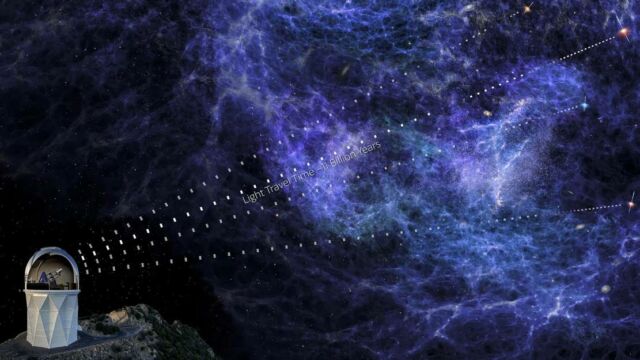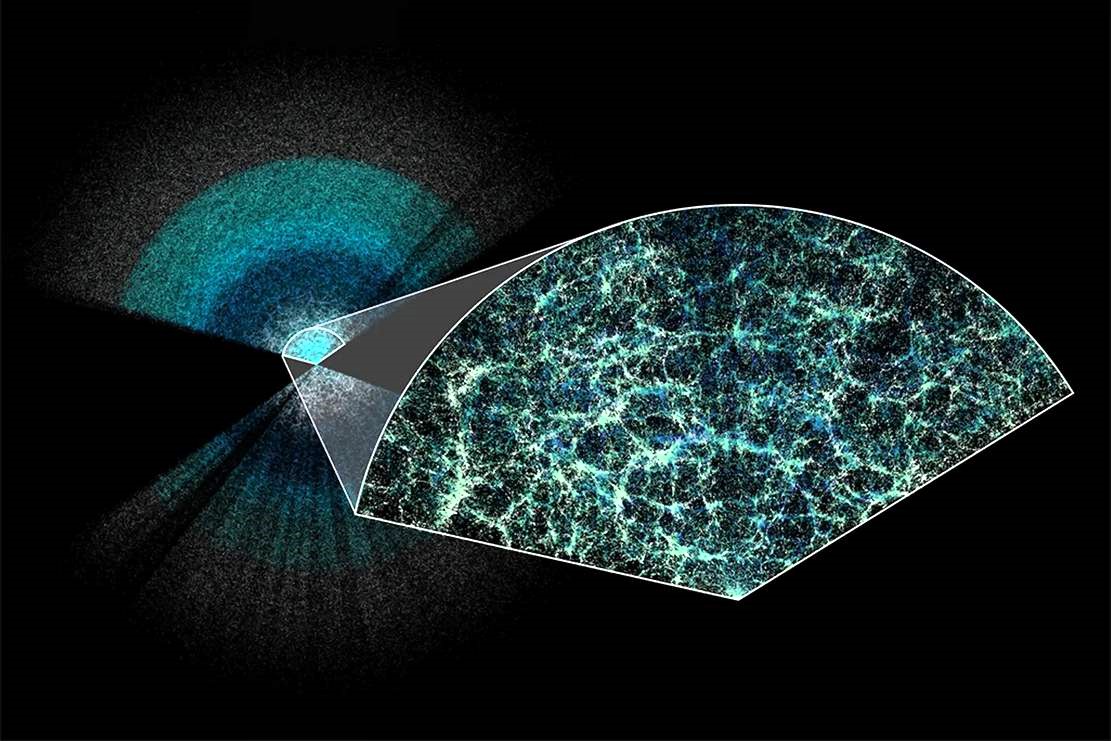The Dark Energy Spectroscopic Instrument (DESI) has created the largest 3D map of the universe. Claire Lamman/DESI collaboration; custom colormap package by cmastro
The Dark Energy Spectroscopic Instrument (DESI) has created the largest 3D map of our Expanding Universe.
Astronomers use the Dark Energy Spectroscopic Instrument (DESI) to craft the most extensive 3D map of our universe to date, shedding light on the enigmatic force known as dark energy that propels its expansion.
Equipped with 5,000 diminutive robots housed within a telescope atop a mountain, researchers have peered back 11 billion years into the cosmos.
By capturing light from distant celestial bodies only now reaching DESI, they’ve unlocked insights into the universe’s youthful state, tracing its evolution to its current form.
This monumental achievement not only enhances our comprehension of cosmic development but also delves into the perplexing realm of dark energy, driving the universe’s ever-accelerating expansion.
 NOIRLab/NSF/AURA/P. Marenfeld and DESI collaboration
NOIRLab/NSF/AURA/P. Marenfeld and DESI collaboration
DESI has unveiled the universe’s expansion history with unprecedented precision, surpassing the 1% threshold for the first time. The culmination of their findings, detailed in multiple papers to be unveiled today on arXiv and in presentations at esteemed scientific gatherings, signifies a monumental leap forward in understanding the universe’s journey through time.
Michael Levi, DESI director and a scientist at the Department of Energy’s Lawrence Berkeley National Laboratory (Berkeley Lab), which manages the project, explains:
“We’re incredibly proud of the data, which have produced world-leading cosmology results and are the first to come out of the new generation of dark energy experiments. So far, we’re seeing basic agreement with our best model of the universe, but we’re also seeing some potentially interesting differences that could indicate that dark energy is evolving with time. Those may or may not go away with more data, so we’re excited to start analyzing our three-year dataset soon.”
source Berkeley Lab



